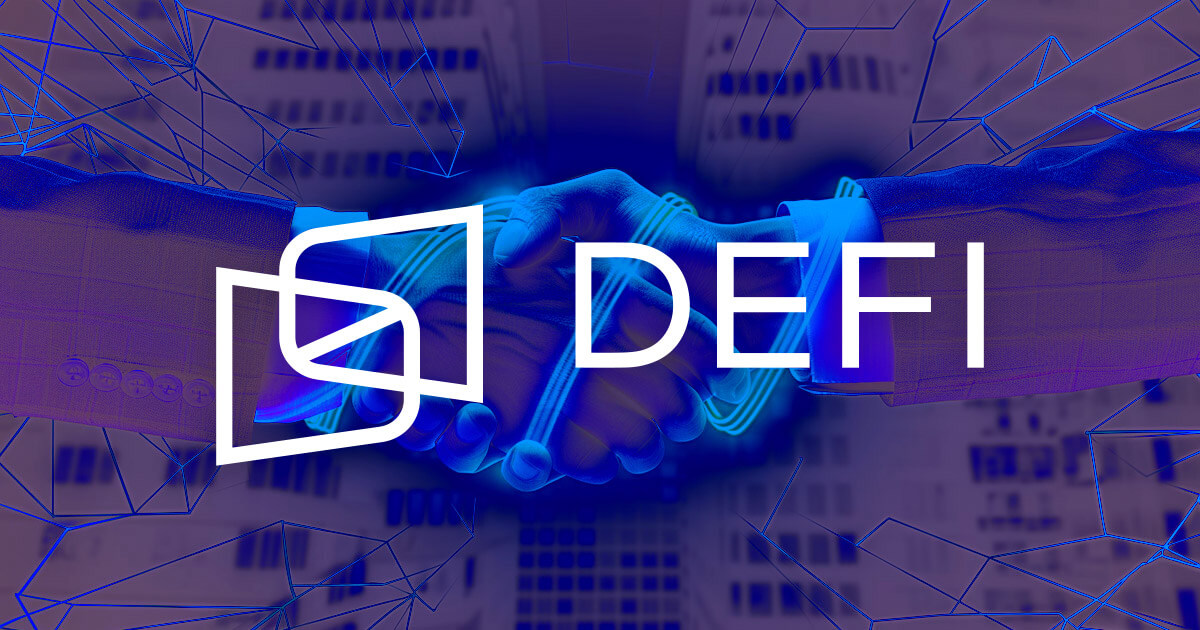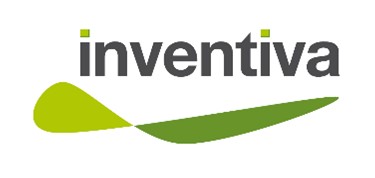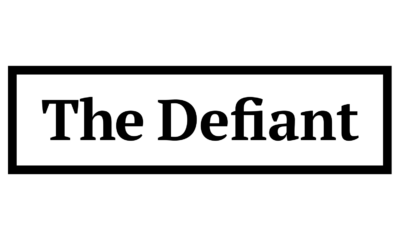DeFi
Vitalik Buterin reveals five ways to rebuild Ethereum from scratch – DL News

- Ethereum architect shares his thoughts on smart contracts, EVM and other features.
- Buterin says Ethereum developers should have shipped proof of stake sooner.
- Ethereum is becoming more widespread with the advent of ETFs.
When 620 tired developers emerged after three days of non-stop coding at this year’s ETHBerlin event last week, few expected Vitalik Buterin to take the stage.
The co-founder and principal architect of Ethereum was a surprise guest.
What was even more surprising were some of his thoughts on building the second largest blockchain in the industry. Buterin detailed some of the regrets he had regarding Ethereum’s initial design.
For many listeners, his speech not only recalled the halcyon days of the network’s birth in 2014, but it also helped lay out the roadmap for the future of a cryptocurrency now worth $448 billion.
The United States has just approved an Ethereum spot exchange-traded fund, and BlackRock, the world’s largest asset manager, launched its own tokenized fund on the blockchain.
The Ethereum network has given rise to a vast ecosystem of developers and financial applications worth over 63 billion dollarsand it has become synonymous with decentralized finance.
List of things
Still, Buterin, a 30-year-old Canadian-Russian programmer, said he has a list of things he would have done differently. They range from the development of the Ethereum virtual machine to smart contracts and the Proof of Stake consensus mechanism.
And he noted that even as Ethereum becomes more widespread, it remains poorly understood.
Join the community to receive our latest stories and updates
“Bitcoin has a simple narrative which is digital gold,” Buterin said. “But like with Ethereum, it’s like ‘Whoa, what is Ethereum?'”
ETHBerlin04 in numbers 🧮
– 802 super humans in total
– 627 hackers
– 83 project submissions
– 56 volunteers
– 40 experienced hosts
– 33 judges
– 18 mentors
– 15 main teams
– 13 speakers
– around twenty dogs– ETHBerlin04 (@ETHBerlin) May 26, 2024
Sitting on comfortable sofas on stage with ETHBerlin organizers Afri Schoeden and Franziska Heintel, Buterin opened his conversation by sharing his fondest memories of the German capital over the years: hacking in the old office with the co-founders of Ethereum Gavin Wood and Jeffrey Wilcke, launch of Devcon. Zero, and celebrating Merge upgrade in 2022.
Then Schoeden asked the question.
“With everything you know and everything you have learned over the last 10 years, how would you build Ethereum differently today if you could start from scratch? asked Schoeden.
Too many songs, too soon
Buterin’s first qualm concerns Ethereum’s virtual machine, which is essential to operating the network as a kind of decentralized crypto megacomputer.
He explained that Ethereum’s original EVM design used 256-bit processing instead of 64 or 32 bits.
In computer architecture, computing size is measured in bits, with larger bits providing better efficiency and processing more data. But 256 bits are very inefficient for most operations and can create a lot of overhead on a blockchain, even for simple tasks.
For a network in its infancy, Ethereum did not need to be optimized for this.
“The original design was way too over-equipped for 256-bit,” Buterin told the audience.
Optimizing smart contracts
Second, Buterin said that early Ethereum developers should have focused on making it easier to write smart contracts with fewer lines of code.
The reason? Added transparency.
With fewer lines of code, he says, “people can properly see and verify what’s going on inside them.”
![]()
Switch to a “shittier” version of staking
Instead of custom computers – called miners – running non-stop to secure a blockchain network, Ethereum has moved to a different model.
Ethereum’s move from one Proof of work consensus mechanism – the way nodes in a blockchain like Bitcoin agree on the state of transaction data – to Proof of Stake in 2022 should have happened much earlier, Buterin said.
“When we moved to Proof of Stake, we should have been prepared to move to a slightly crappier version of Proof of Stake sooner,” he said. “We ended up wasting a lot of cycles really trying to make the proof of stake perfect.”
Instead of miners, Ethereum is now secured by validators who have staked 32 Ethereum, worth approximately $124,000, to do the same thing – and to be rewarded for it. If they behave badly by validating fraudulent transactions for example, they are punished.
In short, the shift replaced raw, energy-intensive computing power with economic incentives.
“We could have saved a huge amount of trees if we had a much simpler proof of stake in 2018,” Buterin said.
Issue logs from day one
From large token transfers to backdoor honeypots, users can track money in crypto quite easily. This is partly thanks to automatic logging.
But as the industry advances, including moving from external accounts like MetaMask to smart wallets like Safe, some aspects of this crucial logging are lost.
In particular, automatic logs for Ether transfers.
“It should have been there from the beginning,” Buterin said. “This could have taken about 30 minutes of coding for me, Gav and Jeff. Instead, it’s an EIP.
Ethereum Improvement Proposals are formal proposals made by developers to change certain aspects of the Ethereum network.
EIP-7708which Buterin submitted on May 17, would bring precisely this change.
![]()
Ditch Keccak
Buterin also said he would have used SHA-2 for Ethereum encryption rather than the current encryption called Keccak.
To understand the difference, you need to delve a little into the history of cryptography, particularly how SHA-3 became a standard. Remember, before crypto became synonymous with celebrity memecoins and nine-digit initial coin offerings, it was complicated math.
When Ethereum was built, the encryption used was “hash function competition” – yes, that’s a thing.
The National Institute of Standards and Technology held the competition to create a new hashing standard alongside SHA-2.
Previous standards had been attacked and debunked. But SHA-2 was unscathed and NIST was simply looking for a safe alternative. After all, variety is the spice of life (and apparently crypto).
Keccak was just one of many contestants who entered the competition. During the competition, the team made some minor changes to their algorithms, resulting in them being crowned the winner. In other words: SHA-3.
The first Ethereum team, however, had already implemented a non-standardized version of Keccak. Essentially, Ethereum uses a pre-SHA-3 iteration.
![]()
Big oops, right?
Well, that meant that Ethereum developers needed a custom library – collections of reusable code that didn’t need to be rewritten from scratch – to support both SHA-3 and Keccak.
“We are not compatible with other systems using SHA-3,” said Marius van der Wijden, one of Ethereum’s main developers. DL News. “We need to support both algorithms in the EVM.”
It’s basically resolved. Today, major libraries support both encryption mechanisms.
So yes, big whoop indeed.
“It does not matter in the grand scheme of things and the current development is certainly not affected by it,” van der Wijden said.
The Ethereum Crack Team
Despite the list of minor design errors, Buterin said it’s inevitable that any project will have a few.
“I am really very happy to feel that our core developers and their ability to execute continue to increase year after year,” he said.
“We are able to correct some of these errors efficiently and safely.”
Liam Kelly is a DeFi correspondent at DL News. Do you have any advice? Email to liam@dlnews.com.
DeFi
Pump.Fun is revolutionizing the Ethereum blockchain in terms of daily revenue

The memecoin launchpad saw the largest daily revenue in all of DeFi over the past 24 hours.
Memecoin launchpad Pump.Fun has recorded the highest gross revenue in all of decentralized finance (DeFi) in the last 24 hours, surpassing even Ethereum.
The platform has raised $867,429 in the past 24 hours, compared to $844,276 for Ethereum, according to DeFiLlama. Solana-based Telegram trading bot Trojan was the third-highest revenue generator of the day, as memecoin infrastructure continues to dominate in DeFi.
Pump.Fun generates $315 million in annualized revenue according to DeFiLlama, and has averaged $906,160 per day over the past week.
Income Ranking – Source: DeFiLlama
The memecoin frenzy of the past few months is behind Pump.fun’s dominance. Solana-based memecoins have been the main drug of choice for on-chain degenerates.
The app allows non-technical users to launch their own tokens in minutes. Users can spend as little as $2 to launch their token and are not required to provide liquidity up front. Pump.Fun allows new tokens to trade along a bonding curve until they reach a set market cap of around $75,000, after which the bonding curve will then be burned on Raydium to create a safe liquidity pool.
Pump.Fun generates revenue through accrued fees. The platform charges a 1% fee on transactions that take place on the platform. Once a token is bonded and burned on Raydium, Pump.fun is no longer able to charge the 1% fee.
Ethereum is the blockchain of the second-largest cryptocurrency, Ether, with a market cap of $395 billion. It powers hundreds of applications and thousands of digital assets, and backs over $60 billion in value in smart contracts.
Ethereum generates revenue when users pay fees, called gas and denominated in ETH, to execute transactions and smart contracts.
DeFi
DeFi technologies will improve trading desk with zero-knowledge proofs

DeFi Technologies, a Canadian company financial technology companyis set to enhance its trading infrastructure through a new partnership with Zero Computing, according to a July 30 statement shared with CryptoSlate.
The collaboration aims to integrate zero-knowledge proof tools to boost operations on the Solana And Ethereum blockchains by optimizing its ability to identify and execute arbitrage opportunities.
Additionally, it will improve the performance of its DeFi Alpha trading desk by enhancing its use of ZK-enabled maximum extractable value (MEV Strategies).
Zero knowledge Proof of concept (ZKP) technology provides an additional layer of encryption to ensure transaction confidentiality and has recently been widely adopted in cryptographic applications.
Optimization of trading strategies
DeFi Technologies plans to use these tools to refine DeFi Alpha’s ability to spot low-risk arbitrage opportunities. The trading desk has already generated nearly $100 million in revenue this year, and this new partnership is expected to further enhance its algorithmic strategies and market analysis capabilities.
Zero Computing technology will integrate ZKP’s advanced features into DeFi Alpha’s infrastructure. This upgrade will streamline trading processes, improve transaction privacy, and increase operational efficiency.
According to DeFi Technologies, these improvements will increase the security and sophistication of DeFi Alpha’s trading strategies.
The collaboration will also advance commercial approaches for ZK-enabled MEVs, a new concept in Motor vehicles which focuses on maximizing value through transaction fees and arbitrage opportunities within block production.
Additionally, DeFi Technologies plans to leverage Zero Computing technology to develop new financial products, such as zero-knowledge index exchange-traded products (ETPs).
Olivier Roussy Newton, CEO of DeFi Technologies, said:
“By integrating their cutting-edge zero-knowledge technology, we not only improve the efficiency and privacy of our transactions, but we also pave the way for innovative trading strategies.”
Extending Verifiable Computing to Solana
According to the release, Zero Computing has created a versatile, chain-agnostic platform for generating zero-knowledge proofs. The platform currently supports Ethereum and Solana, and the company plans to expand compatibility with other blockchains in the future.
The company added that it is at the forefront of introducing verifiable computation to the Solana blockchain, enabling complex computations to be executed off-chain with on-chain verification. This development represents a significant step in the expansion of ZKPs across various blockchain ecosystems.
Mentioned in this article
Latest Alpha Market Report
DeFi
Elastos’ BeL2 Secures Starknet Grant to Advance Native Bitcoin Lending and DeFi Solutions

Singapore, Asia, July 29, 2024, Chainwire
- Elastos BeL2 to Partner with StarkWare to Integrate Starknet’s ZKPs and Cairo Programming Language with BeL2 for Native DeFi Applications
- Starknet integration allows BeL2 to provide smart contracts and dapps without moving Bitcoin assets off the mainnet
- Starknet Exchange Validates the Strength of BeL2’s Innovation and Leadership in the Native Bitcoin Ecosystem
Elastos BeL2 (Bitcoin Elastos Layer2) has secured a $25,000 grant from Starknet, a technology leader in the field of zero-knowledge proofs (ZKPs). This significant approval highlights the Elastos BeL2 infrastructure and its critical role in advancing Bitcoin-native DeFi, particularly Bitcoin-native lending. By integrating Starknet’s ZKPs and the Cairo programming language, Elastos’ BeL2 will enhance its ability to deliver smart contracts and decentralized applications (dapps) without moving Bitcoin (BTC) assets off the mainnet. This strategic partnership with Starknet demonstrates the growing acceptance and maturity of the BeL2 infrastructure, reinforcing Elastos’ commitment to market leadership in the evolving Bitcoin DeFi market.
Starknet, developed by StarkWare, is known for its advancements in ZKP technology, which improves the privacy and security of blockchain transactions. ZKPs allow one party to prove to another that a statement is true without revealing any information beyond the validity of the statement itself. This technology is fundamental to the evolution of blockchain networks, which will improve BeL2’s ability to integrate complex smart contracts while preserving the integrity and security of Bitcoin.
“We are thrilled to receive this grant from Starknet and announce our partnership to build tighter integrations with its ZKP technology and the Cairo programming language,” said Sasha Mitchell, Head of Bitcoin Layer 2 at Elastos. “This is a major milestone for BeL2 and a true recognition of the maturity and capabilities of our core technology. This support will allow us to further develop our innovation in native Bitcoin lending as we look to capitalize on the growing acceptance of Bitcoin as a viable alternative financial system.”
A closer integration with Cairo will allow BeL2 to leverage this powerful programming language to enhance Bitcoin’s capabilities and deliver secure, efficient, and scalable decentralized finance (DeFi) applications. Specifically, the relationship with Cairo reinforces BeL2’s core technical innovations, including:
- ZKPs ensure secure and private verification of transactions
- Decentralized Arbitrage Using Collateralized Nodes to Supervise and Enforce Fairness in Native Bitcoin DeFi
- BTC Oracle (NYSE:) facilitates cross-chain interactions where information, not assets, is exchanged while Bitcoin remains on the main infrastructure
BeL2’s vision goes beyond technical innovation and aims to innovate by creating a new financial system. The goal is to build a Bitcoin-backed Bretton Woods system, address global debt crises, and strengthen Bitcoin’s role as a global hard currency. This new system will be anchored in the integrity and security of Bitcoin, providing a stable foundation for decentralized financial applications.
As integration with Starknet and the Cairo programming language continues, BeL2 will deliver further advancements in smart contract capabilities, decentralized arbitration, and innovative financial products. At Token 2049, BeL2 will showcase further innovations in its core technologies, including arbitrators, that will underscore Elastos’ vision for a fairer decentralized financial system rooted in Bitcoin.
About Elastos
Elastos is a public blockchain project that integrates blockchain technology with a suite of redesigned platform components to produce a modern Internet infrastructure that provides intrinsic privacy and ownership protection for digital assets. The mission is to create open source services that are accessible to the world, so developers can create an Internet where individuals own and control their data.
The Elastos SmartWeb platform enables organizations to recalibrate how the Internet operates to better control their own data.
https://www.linkedin.com/company/elastosinfo/
ContactPublic Relations ManagerRoger DarashahElastosroger.darashah@elastoselavation.org
DeFi
Compound Agrees to Distribute 30% of Reserves to COMP Shareholders to End Alleged Attack on Its Governance

Compound will introduce the staking program in exchange for Humpy, a notorious whale accused of launching a governance attack on the protocol, negating a recently adopted governance proposal.
Compound is launching a new staking program for COMP holders as a compromise with Humpy, a notorious DeFi whale accused of launching a governance attack against the veteran DeFi protocol.
On July 29, Bryan Colligan, head of business development at Compound, published a governance proposal outlining plans for a new compound participation product that would pay 30% of the project’s current and future reserves to COMP participants.
Colligan noted that the program was requested by Humpy in exchange for his agreement Proposition 289 — which sought to invest 499,000 COMP worth approximately $24 million into a DeFi vault controlled by Humpy, and which appears to have been forced by Humpy and his associates over the weekend.
“We propose the following staking product that meets Humpy’s stated interests as a recent new delegate and holder of COMP in exchange for the repeal of Proposition 289 due to the governance risks it poses to the protocol,” Colligan said. “The Compound Growth Program…will execute the above commitments, given the immediate repeal of Proposition 289.”
Colligan added that the proposal would expire at 11:59 p.m. EST on July 29. Had Humpy not rescinded Proposition 289, Compound would move forward with it. Proposition 290 — block Humpy using the Compound team’s multi-sig to deploy a new governor contract removing the delegate’s governance power behind Proposition 289.
Hunchback tweeted that Proposition 289 had been repealed a few hours ago. “Glad to have brought Compound Finance back into the spotlight,” they said. added. “StakedComp… finally becomes a yield-generating asset!
Markets reacted favorably to the resolution, with the price of COMP increasing by 6.2% over the past 24 hours, according to CoinGecko.
Attack on governance
Proposition 289 proposed investing 499,000 COMP from the Compound treasury into goldCOMP, a yield-generating vault of the Humpy-linked Golden Boys team.
The proposal passed with nearly 52 percent of the vote on July 28, despite two previous iterations of the proposal being defeated by strong opposition. Can And JulyThe proposals notably asked for only 92,000 COMP, with security researchers warning that any deposit of tokens into the goldCOMP vault would cede their governance power.
In May, Michael Lewellen of Web3 security firm OpenZeppelin, note The first proposal was submitted by a new governance delegate who was suddenly awarded 228,000 COMP by five wallets that got their tokens from the Bybit exchange. Combined with his own tokens, the delegate got 325,333 COMP, which is over 81% of the 400,000 tokens required for a governance proposal to reach quorum.
“We have been alerting the community to the risk that these delegates could support a potential attack on governance,” Lewellen said. “The timing of the new proposal and these recent delegations are suspect.”
Read more: Compound community accuses famous whale of attacking engineering governance
-

 Videos4 weeks ago
Videos4 weeks agoAbsolutely massive: the next higher Bitcoin leg will shatter all expectations – Tom Lee
-

 News12 months ago
News12 months agoVolta Finance Limited – Director/PDMR Shareholding
-

 News12 months ago
News12 months agoModiv Industrial to release Q2 2024 financial results on August 6
-

 News12 months ago
News12 months agoApple to report third-quarter earnings as Wall Street eyes China sales
-

 News12 months ago
News12 months agoNumber of Americans filing for unemployment benefits hits highest level in a year
-

 News1 year ago
News1 year agoInventiva reports 2024 First Quarter Financial Information¹ and provides a corporate update
-

 News1 year ago
News1 year agoLeeds hospitals trust says finances are “critical” amid £110m deficit
-

 Markets1 year ago
Markets1 year agoWhale Investments in Bitcoin Hit $100 Billion in 2024, Fueling Insane Investor Optimism ⋆ ZyCrypto
-

 DeFi1 year ago
DeFi1 year ago🏴☠️ Pump.Fun operated by Insider Exploit
-

 Videos1 year ago
Videos1 year ago$1,000,000 worth of BTC in 2025! Get ready for an UNPRECEDENTED PRICE EXPLOSION – Jack Mallers
-

 Videos1 year ago
Videos1 year agoABSOLUTELY HUGE: Bitcoin is poised for unabated exponential growth – Mark Yusko and Willy Woo
-

 Tech1 year ago
Tech1 year agoBlockDAG ⭐⭐⭐⭐⭐ Review: Is It the Next Big Thing in Cryptocurrency? 5 questions answered












